Mold Flipper: What Training and Safety Practices Protect Teams in Saudi Arabia?
Handling massive molds, often weighing several tons, is a daily reality in heavy industries like steel manufacturing. But a single mistake, a moment of inattention, or a mechanical failure can lead to catastrophic consequences. You might be worried about the safety of your team, the risk of production-halting accidents, and the massive financial and human cost of something going wrong. I've seen these concerns firsthand in factories around the world. The good news is that these risks can be managed effectively. The solution lies not just in the machine itself, but in a robust system of training and safety practices built around it.
To protect teams in Saudi Arabia, companies must implement a multi-layered safety strategy for mold flippers. This includes strict adherence to international and local safety standards like ISO and SASO, comprehensive, role-specific operator training, regular, documented maintenance schedules, and the integration of modern safety technologies like interlocking guards and load sensors. The goal is to create a safety culture, not just a set of rules.
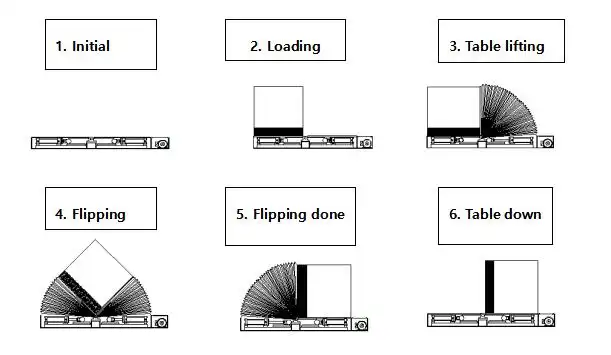
I’ve spent my entire career in and around packing and handling machinery, first as an engineer and later as a factory owner. I understand the pressure to maintain production uptime and control costs. But I also know that the most successful and profitable operations are always the safest. The practices we see in demanding industrial environments like Saudi Arabia offer a valuable blueprint for any leader who, like you, wants to ensure their investment in equipment also protects their most valuable asset: their people. Let's break down what these best-in-class safety practices look like.
What are the core safety standards for mold flipper operation in Saudi Arabia?
In a high-stakes industrial environment, you can't afford to guess about safety. You might see a new piece of equipment like a mold flipper and wonder, "What are the rules? Are we compliant?" This uncertainty can be a source of constant anxiety, fearing inspections, fines, or worse, an accident that could have been prevented. The problem is that standards can seem like a complex web of local and international regulations. The real solution is to build your safety program on a foundation of universally recognized standards, and then layer on any specific local requirements.
The core safety standards for mold flipper operation in Saudi Arabia are a blend of international best practices, such as ISO 12100 for risk assessment and machinery safety, and national regulations enforced by the Saudi Standards, Metrology and Quality Organization (SASO). Companies are also expected to follow guidelines similar to OSHA's for machine guarding, lockout/tagout procedures, and operator certification to ensure a comprehensively safe working environment.
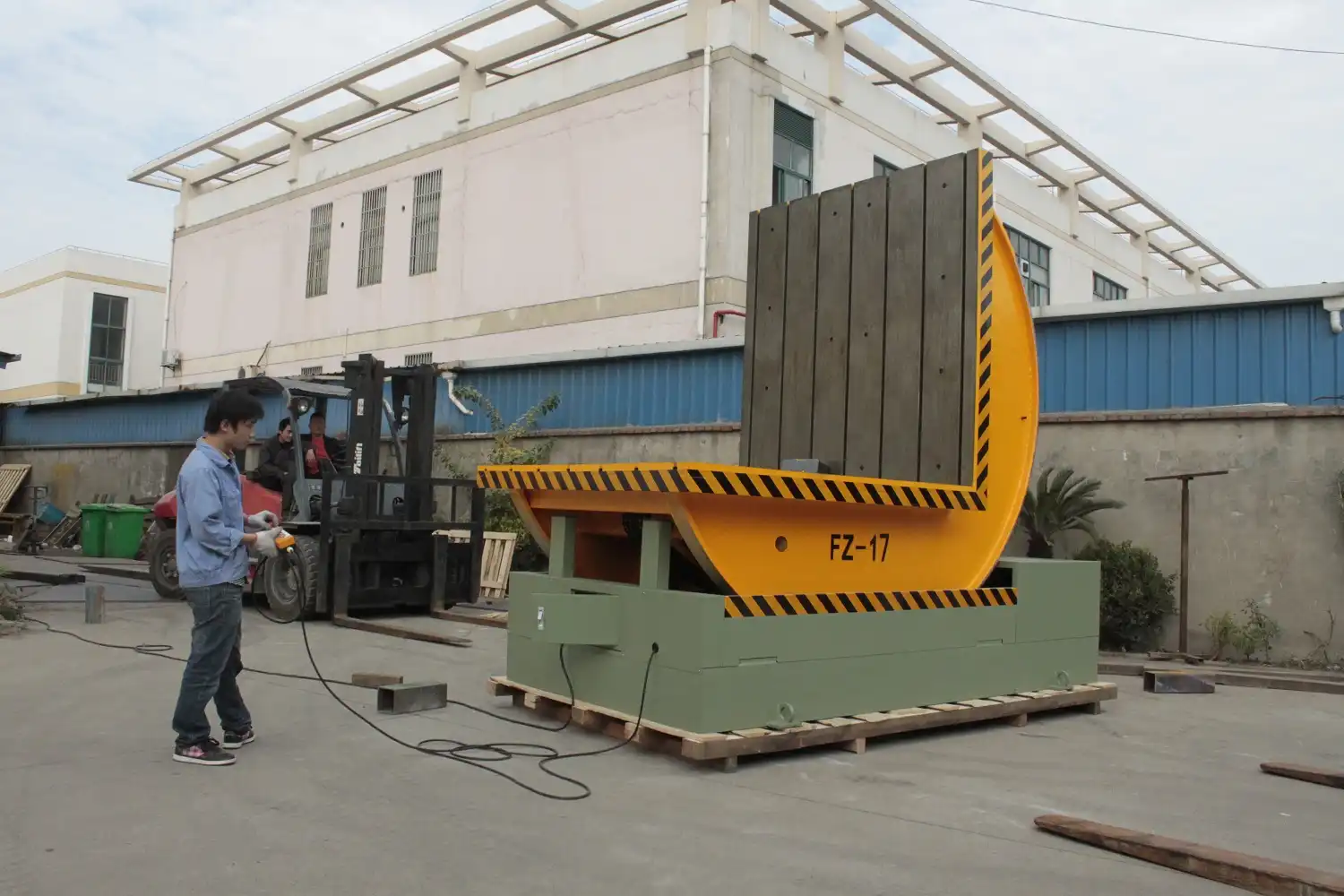
A Deeper Look at Compliance
When I work with clients, I always emphasize that safety standards are not just a box to tick. They are the collected wisdom from decades of industrial experience, often written after tragic lessons were learned. For a CEO like you, Javier, who analyzes every investment for its return and stability, think of compliance as an insurance policy against downtime and disaster. In Saudi Arabia, the industrial landscape is sophisticated. They don't just import a machine; they import the safety culture that comes with it.
Key Standards to Implement
-
ISO 12100: Safety of Machinery: This is the master standard. It provides a framework for designers and manufacturers (like us at SHJLPACK) and for end-users (like you) to identify hazards and assess risks throughout the machine's lifecycle. It forces you to ask questions like: What could go wrong? How severe would it be? How can we prevent it? For a mold flipper, this involves analyzing everything from crushing hazards during rotation to electrical risks in the control panel.
-
Lockout/Tagout (LOTO): While often associated with OSHA in the US, the principle is global and critical in Saudi Arabia. Before any maintenance or cleaning, the mold flipper must be completely de-energized. This means locking the main power disconnect so it cannot be turned on accidentally. I’ve seen cheap equipment that makes this difficult. A well-designed machine has a single, easily accessible point for a physical lock. This is a non-negotiable feature for any equipment in a modern steel plant.
-
SASO Standards: The Saudi Standards, Metrology and Quality Organization sets the rules within the Kingdom. For machinery, this often involves conformity certificates ensuring the equipment meets electrical safety, mechanical integrity, and EMC (Electromagnetic Compatibility) standards. A reliable supplier will provide all the necessary documentation for SASO conformity, making your import and commissioning process smooth.
Here’s a simplified breakdown of how these standards apply to a mold flipper:
| Standard Category | Specific Application for Mold Flipper | Why It Matters for a Steel Mill Owner |
|---|---|---|
| Mechanical Safety | Guarding around moving parts, emergency stop buttons, stable and robust frame structure, certified lifting points. | Prevents crushing, pinching, and impact injuries. Ensures the machine can handle the specified load without fail. |
| Electrical Safety | Proper grounding, insulated wiring, overload protection, control panel built to international codes (like IEC). | Eliminates risk of electric shock and fire. Ensures reliable operation in a demanding industrial environment. |
| Operational Safety | Clear load capacity markings, audible and visual warning signals during operation, logical and intuitive controls. | Prevents overloading and misuse. Alerts nearby personnel that the machine is in motion. |
| Procedural Safety | Documented LOTO procedures, mandatory pre-use inspections, clear work zones marked on the floor around the machine. | Creates a predictable and safe workflow, reducing human error which is a factor in over 80% of accidents. |
Ultimately, these standards work together. They form a system that protects your people, protects your investment, and keeps your production line moving. Adopting them isn't a cost; it's a fundamental part of achieving the operational excellence you're aiming for.
How can tailored training programs protect workers using mold flippers?
You can buy the safest, most advanced mold flipper in the world, but if the person operating it isn't properly trained, it's still a hazard. I've seen factories invest millions in new equipment, only to have it damaged or cause an accident within weeks due to operator error. This leads to frustration, costly repairs, and a loss of trust in the new technology. You worry about your team's competency and the "human factor" in safety. The solution is not a generic, one-size-fits-all training session. It's a customized, ongoing training program that turns your operators into competent, confident masters of the equipment.
Tailored training programs protect workers by moving beyond basic operation to instill a deep understanding of the mold flipper’s mechanics, safety features, and emergency procedures. This involves a mix of classroom theory, hands-on simulation with non-critical loads, and specific training on emergency protocols like power failure recovery and E-stop engagement, ensuring operators are prepared for any situation.
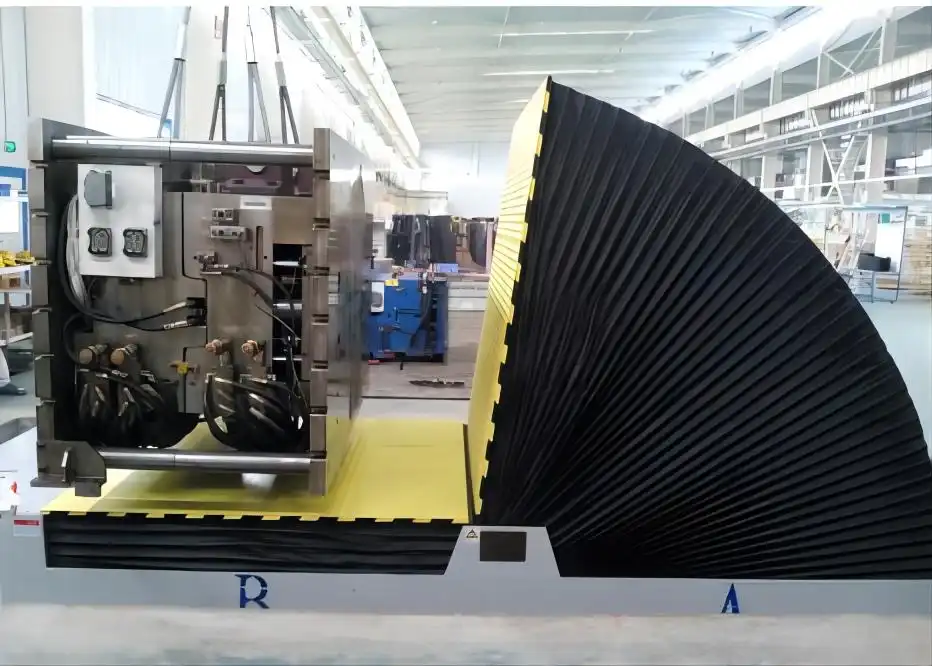
Building Competence, Not Just Compliance
When I was starting out, I learned a simple truth: competence builds confidence, and confidence builds safety. A nervous or uncertain operator is more likely to make a mistake. A comprehensive training program is the best way to build that competence. For a tough environment like a steel mill in Saudi Arabia or Mexico, training needs to be equally tough and thorough. It's not about a 30-minute talk and a signed piece of paper. It's about creating experts.
Elements of a World-Class Training Program
A truly effective program is built in layers, reinforcing knowledge and skills over time.
-
Classroom Foundation: This is where it starts. Operators need to understand the "why" before the "how."
- Machine Theory: How does it work? What are the hydraulic, mechanical, and electrical systems? Understanding this helps operators recognize abnormal sounds or movements that could signal a problem.
- Safety Systems Deep Dive: Don't just show them the E-stop button. Explain exactly what happens when it's pushed. Review every sensor, every guard, and every interlock.
- Load Dynamics: This is critical for mold flippers. Trainees must understand the concepts of center of gravity, load security, and the dangers of unbalanced or improperly secured molds. In a steel mill, molds are often complex and heavy; this knowledge is non-negotiable.
-
Hands-On Supervised Practice: Theory is useless without practice.
- Empty Cycles: Run the machine through its full range of motion without a load. Let the operator get a feel for the controls, the speed, and the sounds of normal operation.
- Practice Loads: Use a concrete block or a scrap mold of known weight to practice loading, securing, flipping, and unloading. A supervisor should be present, providing feedback and correcting technique.
- Emergency Drills: This is what separates average training from great training. What do you do if the power fails mid-flip? How do you perform an emergency lowering procedure? Drills should be a regular part of training, so the response becomes instinctual, not panicked.
-
Certification and Re-evaluation:
- Formal Assessment: At the end of the initial training, there should be a formal test—both written and practical—to certify an operator. This isn't about punishment; it's about verifying competence.
- Ongoing Training: Safety is not a one-time event. Annual refresher courses and regular safety talks keep the information fresh. If the machine is modified or you start handling new types of molds, retraining is essential.
Here’s how a training matrix for a mold flipper operator might look:
| Training Module | Learning Objective | Method | Assessment |
|---|---|---|---|
| 1. Machine Fundamentals | Understand the purpose and function of all major components. | Classroom session, manual review. | Written quiz. |
| 2. Safety Systems | Identify and explain the function of all safety features (E-stops, guards, etc). | Classroom and machine walk-around. | Practical demonstration. |
| 3. Basic Operation | Safely operate the flipper through a full cycle with a practice load. | Supervised hands-on training. | Supervisor observation and sign-off. |
| 4. Load Securing | Correctly secure various types of molds according to procedure. | Hands-on practice with real molds. | Practical test of securing techniques. |
| 5. Emergency Procedures | Respond correctly to simulated emergencies like power loss or overload alarm. | Simulated drills. | Performance evaluation during drills. |
| 6. Daily Inspection | Perform a complete pre-use inspection and document findings. | Checklist-based walk-through. | Review of completed inspection forms. |
Investing in this level of training for your teams, whether in Saudi Arabia or Mexico, directly supports your goals. A well-trained operator is more efficient, less likely to damage equipment, and is the first line of defense in your plant's safety system. It's an investment with one of the highest returns you can make.
What role does a proactive maintenance schedule play in mold flipper safety?
You have aging equipment on your production lines, and you know the pain of unexpected breakdowns and rising failure rates. An old machine isn't just inefficient; it's a safety hazard waiting to happen. You might worry that even a brand-new mold flipper will eventually become another maintenance headache. The problem is thinking of maintenance as a reactive task—fixing things only when they break. The solution is to adopt a proactive, predictive maintenance culture, which is essential for ensuring the long-term safety and reliability of heavy equipment.
A proactive maintenance schedule plays a critical role in mold flipper safety by identifying and correcting potential failures before they occur. This involves a structured plan of daily operator checks, weekly lubrications and inspections, and monthly or annual deep dives into hydraulic, electrical, and structural systems. This prevents catastrophic failures that could lead to accidents and ensures the machine operates within its design specifications.
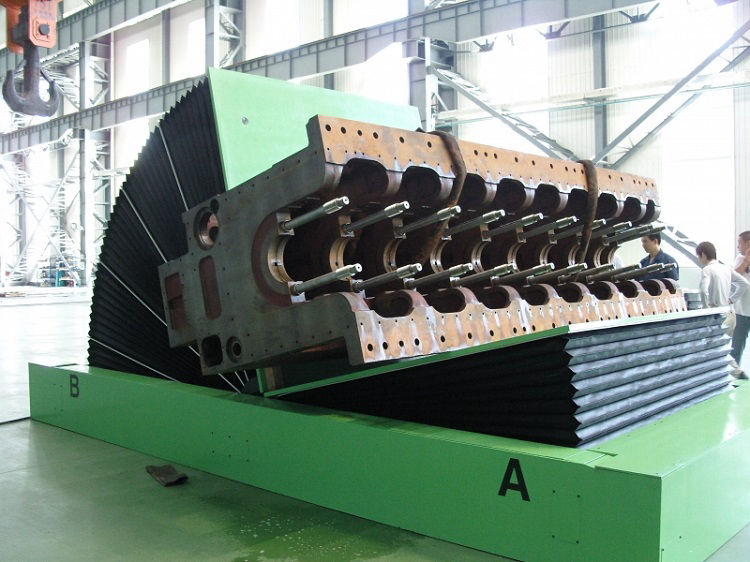
From "Fixing" to "Preventing"
When I established my own factory, one of the biggest shifts I made was in our approach to maintenance. We moved from a "run-it-till-it-breaks" mentality to a culture of preventative care. This single change dramatically reduced our downtime and, more importantly, our near-miss safety incidents. For a capital-intensive business like a steel mill, predictive maintenance isn't a luxury; it's a core component of your strategy to improve产能利用率 (capacity utilization) and reduce costs. A well-maintained machine is a safe machine and a profitable machine.
Building a Robust Maintenance Program
A world-class maintenance program for a mold flipper isn't complicated, but it requires discipline. It can be broken down into clear, actionable steps. In demanding environments like those found in Saudi Arabia, where dust and heat can accelerate wear and tear, this discipline is even more critical.
-
The Operator's Daily Check: Your operator is the first line of defense. They interact with the machine every day and can spot small changes that a maintenance technician might miss. Before their first cycle of the day, they should have a simple checklist:
- Visual inspection for any signs of damage, leaks (hydraulic fluid), or loose parts.
- Check that all guards and safety devices are in place and functional.
- Test the emergency stop button.
- Listen for any unusual noises during an unloaded test cycle.
This takes five minutes but can prevent a multi-day shutdown.
-
The Technician's Weekly Routine: This is a more hands-on check.
- Lubricate all designated points (bearings, chains, pivot points) according to the manufacturer's manual.
- Check and tighten any loose bolts or fasteners, especially on structural components.
- Inspect hydraulic hoses for wear, cracks, or abrasion.
- Check hydraulic fluid levels and clarity.
-
The Deep Dive (Monthly/Annually): This is a scheduled, more in-depth inspection.
- Hydraulic System: Check pump pressure, test relief valves, and consider taking a fluid sample for analysis to detect contamination before it causes pump failure.
- Electrical System: Open the control panel (with power locked out!) and check for loose connections, signs of overheating on contactors, and the integrity of wiring insulation.
- Structural Inspection: Examine all welds for any signs of stress or cracking. This is especially important for equipment that handles heavy, cyclical loads, just like in your steel mill.
Here is a sample maintenance schedule:
| Frequency | Task | Performed By | Purpose |
|---|---|---|---|
| Daily | Pre-use visual inspection and E-stop test. | Operator | Catch obvious faults and ensure basic safety functions are working. |
| Weekly | Lubrication, check fasteners, inspect hydraulic hoses. | Maintenance Tech | Prevent wear and tear on moving parts; prevent hydraulic system failure. |
| Monthly | Inspect electrical cabinet connections, check fluid levels. | Qualified Electrician/Tech | Prevent electrical faults and ensure hydraulic system health. |
| Annually | Comprehensive structural weld inspection, hydraulic pressure test, change hydraulic fluid and filters. | Senior Tech/Specialist | Identify long-term fatigue or wear, reset system to baseline performance. |
This proactive approach directly addresses your challenge of aging equipment. By applying this philosophy to both new and existing machinery, you turn maintenance from a cost center into a strategic tool for achieving your goal of 95% equipment uptime and a safer, more predictable production environment.
How does modern technology enhance the safety of mold flipping operations?
As an engineer and entrepreneur who champions technical innovation, you understand that technology is a powerful lever for change. You've already seen success with systems for heat recovery and smart scheduling. So you might be asking, how can we apply that same forward-thinking approach to something as seemingly straightforward as a mold flipper? The problem is that many see safety as a purely mechanical or procedural issue. But the real opportunity for a step-change in both safety and efficiency comes from integrating modern digital technology.
Modern technology enhances mold flipper safety by adding layers of intelligent control and monitoring. This includes IoT sensors that predict maintenance needs, programmable logic controllers (PLCs) that enforce safe operating sequences, light curtains that create intangible safety barriers, and data logging that provides insights for continuous improvement. These technologies transform the machine from a passive tool into an active partner in the safety process.
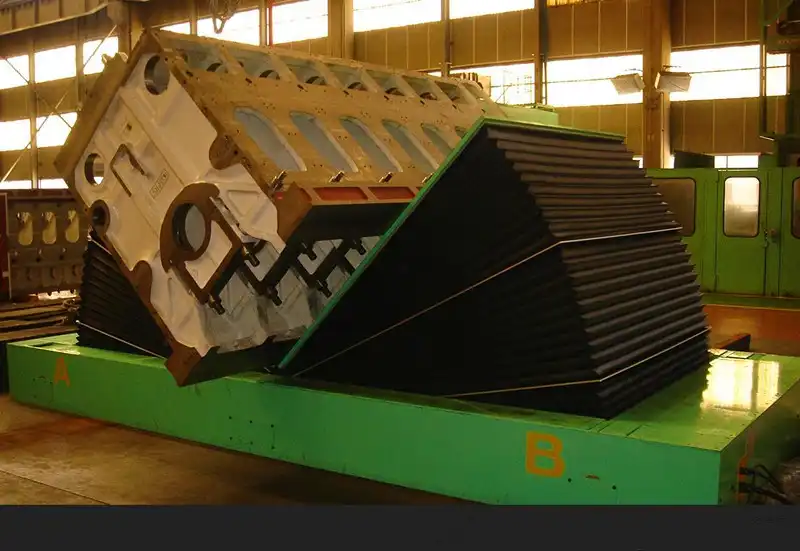
Beyond the E-Stop Button: The Rise of Smart Safety
When I founded SHJLPACK, my goal was not just to build strong machines, but to build smart ones. I believe the future of industrial safety lies in the fusion of robust mechanical engineering and intelligent digital systems. This directly aligns with your goal of pushing for digitalization across your plant. By deploying these technologies, you are not just preventing accidents; you are gathering data to make your entire operation more visible, predictable, and profitable. Let's look at how this applies specifically to a mold flipper in a demanding setting like Saudi Arabia or your own steel mill.
Key Technologies for a Safer, Smarter Flipper
-
Programmable Logic Controllers (PLCs) with Safety I/O:
- What it is: The modern brain of the machine. A safety-rated PLC can enforce a strict sequence of operations. For example, it can prevent the machine from rotating until it confirms that all hydraulic clamps are fully engaged and pressurized. It makes bypassing safety steps impossible.
- Your Advantage: This removes human error from critical safety checks. It supports your goal of achieving higher productivity by ensuring every cycle is performed correctly and safely, reducing the chance of operator-induced damage or downtime.
-
IoT Sensors and Predictive Maintenance:
- What it is: Vibration sensors on motors, temperature sensors on hydraulic pumps, and pressure transducers in the lines. This data is monitored continuously. An IoT platform can analyze trends and alert you that a bearing's vibration is increasing or a pump is running hotter than normal, predicting a failure weeks before it happens.
- Your Advantage: This is the heart of your goal to move towards predictive maintenance and boost equipment uptime to 95%. Instead of waiting for a breakdown, you schedule maintenance during planned downtime, turning an emergency into a routine task.
-
Light Curtains and Area Scanners:
- What it is: These create an invisible field of infrared light around the machine's hazardous motion zone. If a person or object breaks the beam while the machine is moving, it instantly stops in a safe state.
- Your Advantage: This provides a higher level of protection than physical guards alone, which can sometimes be removed or bypassed. It's a foolproof way to protect personnel who need to work near the machine.
Here's how these technologies work together to create a "smart" safety ecosystem:
| Technology | Function | Safety Benefit | Link to Your Goals |
|---|---|---|---|
| Safety PLC | Enforces correct operating sequences (e.g., clamp before flip). | Prevents misuse and critical human errors. | Increases process stability and reduces risk of equipment damage. |
| IoT Sensors | Monitor machine health (vibration, temperature, pressure). | Predicts component failure before it becomes a catastrophic and unsafe event. | Directly enables predictive maintenance, boosting uptime and reducing repair costs. |
| Light Curtains | Create a non-contact safety barrier around the machine. | Immediately stops machine motion if a person enters a dangerous area. | Enhances worker safety without hindering access for loading/unloading. |
| Data Logging | Records every cycle, fault, and E-stop event. | Provides data to analyze near-misses and identify areas for process or training improvement. | Supports your digitalization goal by making production processes fully transparent. |
By embracing these technologies, you are doing more than just buying a machine. You are investing in a data-rich asset that integrates directly into your vision for a smarter, safer, and more profitable steel mill. It’s a strategic move that aligns perfectly with your proven track record of leveraging technology to overcome industrial challenges.
What is the most critical, yet often overlooked, element in mold flipper safety?
We have talked about standards, training, maintenance, and technology. These are the four pillars of a strong safety program. You can implement all of them perfectly. You can buy the best machine, write the best procedures, and use the latest sensors. But there's one more element, and in my experience, it's the one that truly separates a good safety program from a great one. It's the element that many companies miss. They focus so much on the hardware and the rules that they forget about the "software" that runs the whole system: their people and the culture they work in.
The most critical, yet often overlooked, element in mold flipper safety is establishing a genuine, leadership-driven "Culture of Safety." This goes beyond rules and procedures; it's an environment where every single employee, from the CEO to the newest operator, feels personally responsible for their own safety and the safety of their colleagues. It's a culture where speaking up about a potential hazard is encouraged and rewarded, not punished.
I remember visiting a client's facility years ago. They had a brand-new machine from a competitor. On paper, everything was perfect. They had the manuals, the training logs, the maintenance schedules. But as I walked the floor, I felt a sense of unease. Operators were rushing. Supervisors were focused only on production numbers. There was a near-miss incident where a load shifted, and I saw the operator glance nervously at his manager before just carrying on. Nobody stopped. Nobody talked about what happened.
In that moment, I knew they had a safety problem, regardless of how good their equipment was. They had a culture of production, not a culture of safe production.
You, the CEO, are the Chief Safety Officer
Javier, as the owner and CEO, you set the tone for the entire 200-million-ton operation. Your priorities become your managers' priorities, which then become the operators' priorities. If your team believes that you value production output above all else, they will take risks to meet those targets. But if they see you on the floor asking about safety, if they hear you celebrating a team for stopping the line to fix a potential hazard, and if they know that you are personally invested in their well-being, their behavior will change.
A true Culture of Safety has these characteristics:
- Leadership Commitment: Safety is the first topic in every meeting. You, the leader, personally review all safety incidents. Your investment in safety is visible and consistent.
- Employee Empowerment: Every worker has the authority and the obligation to stop a job they believe is unsafe, without fear of retribution. This is the ultimate test of a safety culture.
- Open Communication: Near-misses are not hidden. They are reported, investigated, and discussed openly so that everyone can learn from them. A near-miss is a free lesson.
- Continuous Improvement: The safety program is never "finished." It is constantly reviewed and improved based on feedback from the people who do the work every day.
When I started my own factory, I made a promise to my first employees. I told them, "Your families expect you to come home safe every day. That is my number one responsibility." Building that trust was the most important investment I ever made. It didn't cost anything in terms of capital, but it paid the highest dividends in morale, loyalty, and, yes, productivity. A team that feels safe is a team that can focus on doing great work.
For you, fostering this culture is the key to unlocking the full potential of your other goals. It will reduce the costs associated with accidents and downtime. It will improve the reliability and utilization of your equipment. Most importantly, it will build a resilient, world-class organization. You're not just buying a mold flipper; you're building a system. And that system is powered by your people.
Conclusion
Ultimately, ensuring mold flipper safety in any demanding industrial environment, from Saudi Arabia to Mexico, relies on a holistic system—strong standards, expert training, proactive maintenance, smart technology, and a committed safety culture.





